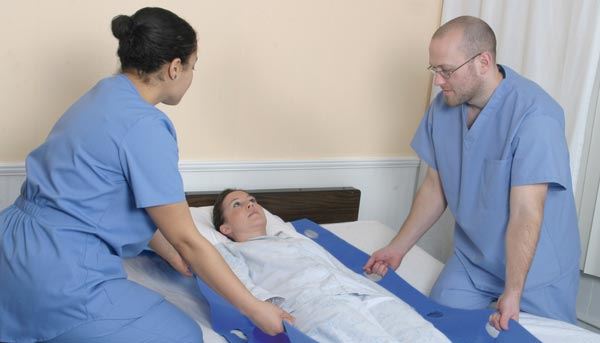
- Work-related musculoskeletal disorders are among the most costly health problems.
- The high rate of injuries sustained from patient handling suggests that significant changes are needed.
Patient transfer can be a physically demanding process that, if not handled properly, may lead to injury for both patients and medical personnel.
When hospital patients need to be shifted from one surface to another or adjusted into position, it is the job of the nurses and other medical personnel to move them. However, this can be a physically demanding process that, if not handled properly, may lead to injury for both patients and medical personnel, a fact that highlights the importance of having the right patient transfer equipment.
Improper training is still rampant
According to the U.S. Centers for Disease Control and Prevention, work-related musculoskeletal disorders are among the most costly health problems. Many of these injuries affect the back and shoulders, and a significant number of them impact nurses and other medical professionals who have to move patients.
In 2006, AFT Healthcare, formerly known as the Federation of Nurses and Health Professionals, reported on a survey of more than 500 hospital nurses who worked in direct patient care and more than 400 hospital radiology technicians. The results were worrisome:
- Fifty-six percent of nurses and 64 percent of technicians reported chronic pain related to lifting, moving or repositioning patients.
- Thirty-eight percent of nurses and 42 percent of technicians were injured while handling patients.
- Forty-seven percent nurses and 30 percent of technicians considered leaving their jobs because of the difficulties they experienced when handling patients.
Many nursing schools and similar institutions educate their students on proper body mechanics during patient handling. However, these techniques are outdated and leave medical personnel prone to injury, according to the CDC. This underscores the need for medical facilities to use safe patient transfer devices.
Rate of use needs to improve
Still, the number of medical professionals who use such equipment is suboptimal. In fact, the AFT Healthcare survey revealed that only 24 percent of nurses and 27 percent of technicians regularly used this equipment to move patients, despite the evidence indicating that these devices can reduce the risk of injury and pain. Experts from the CDC suggest that this may be attributable to the fact that safe patient handling techniques that include safety equipment are relatively new, meaning there is relatively little published evidence to support their use.
However, the high rate of injuries sustained from patient handling suggests that significant changes are needed. It is definitely worthwhile for hospitals to invest in patient transfer equipment that includes and multi-purpose 1/2 shifters - all of which are available at AliMed. This equipment allows patients to be moved between uneven surfaces. They are lightweight, but have high weight holding capacity. Furthermore, because they take up so little room, rollers and shifters are ideal for the OR.